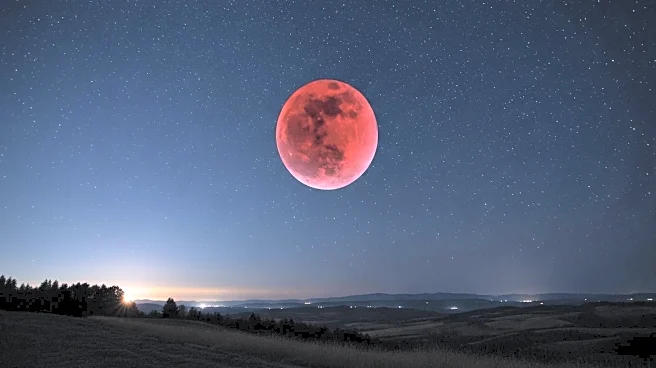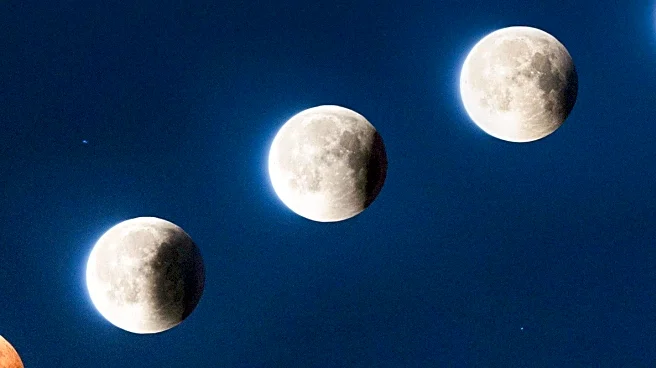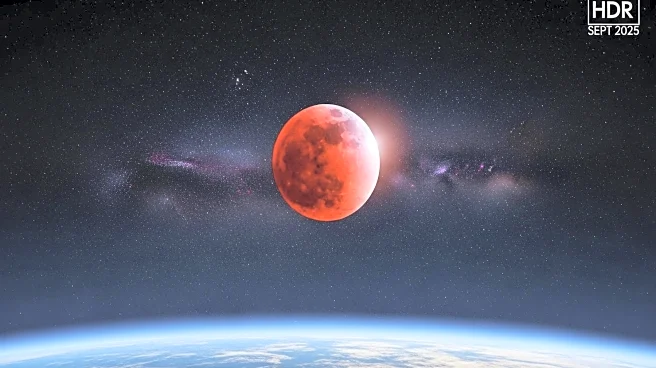What's Happening?
A total lunar eclipse, commonly referred to as a 'blood moon,' is set to occur on September 7-8, 2025. This astronomical event happens when Earth is positioned between the moon and the sun, causing Earth's shadow to cast a reddish hue on the moon. However, this particular eclipse will not be visible from the United States. The eclipse will be visible in regions such as Europe, Africa, Asia, and Australia. The totality phase, where Earth's shadow completely covers the moon, is expected to last for about one hour and 22 minutes. The entire event will span approximately three hours and 29 minutes, including penumbral and umbral phases, which are the two main parts of the shadow cast by the moon.
Why It's Important?
The absence of visibility in the U.S. for this lunar eclipse highlights the geographical limitations of astronomical events. While Americans will miss this 'blood moon,' it underscores the global nature of such phenomena, which can be observed from different parts of the world. The event serves as a reminder of the interconnectedness of celestial occurrences and the importance of international collaboration in astronomy. For enthusiasts and researchers in the U.S., this eclipse provides an opportunity to plan for future events, such as the next visible total lunar eclipse in March 2026.
What's Next?
The next total lunar eclipse visible in the United States is scheduled for March 3, 2026. This upcoming event will allow Americans to witness the 'blood moon' phenomenon firsthand. In the meantime, astronomers and sky watchers can prepare for other celestial events and continue to engage with international observations and studies.












